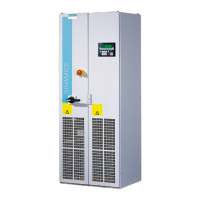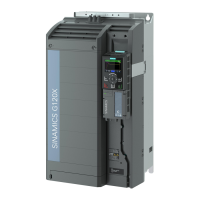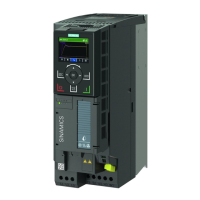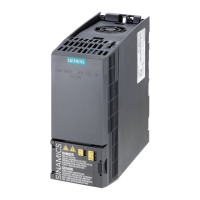#SBLJOHSFTJTUPSCSBLJOHQPXFS
#SBLJOHSFTJTUPS
-PBEBDDFMFSBUJOH.PUPSJ[FEPQFSBUJPO
-PBECSBLJOH(FOFSBUJOHPQFSBUJPO
4QFFE
%$MJOLWPMUBHFS
.BYJNVN%$MJOLWPMUBHFS
"DUJWBUJPOUISFTIPMEGPSUIFCSBLJOH
NPEVMF
S
U
U
U
O
_
_
O
_
_
O
_
_
O
_
_
Figure14-191 Simplied representation of dynamic braking with respect to time
The motor supplies regenerative energy to the converter when braking. The regenerative
energy causes the DC link voltage in the converter to increase. Above the activation
threshold for the braking module, the converter transfers the regenerative energy to the
braking resistor.
There are two upload options available for temperature monitoring of the braking resistor:
1. Temperature monitoring with a temperature sensor
Connect the temperature sensor of the braking resistor to a free digital input on the converter
and assign the "External fault" function to the digital input used.
2. Temperature monitoring using a thermal model in the software
– If the consumed energy of the braking resistor reaches 80% of the thermal model, the
converter issues an alarm.
– If the consumed energy of the braking resistor reaches the switch-o threshold, the
converter issues an alarm and blocks the braking resistor.
When the braking resistor has cooled down, the converter unblocks the braking resistor
again.
Parameter setting p0215 denes the selection of braking resistors for dynamic braking as
follows:
• p0215=0 No braking resistor
• p0215=1 Use braking resistor without temperature monitoring in the software
We recommend temperature monitoring with a temperature sensor
Functions
14.11Drive functions
SINAMICS G220 converter
604 Operating Instructions, 04/2024, FW V6.2, A5E51781573B AB
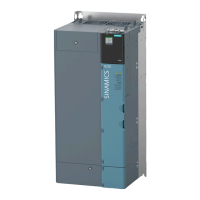
